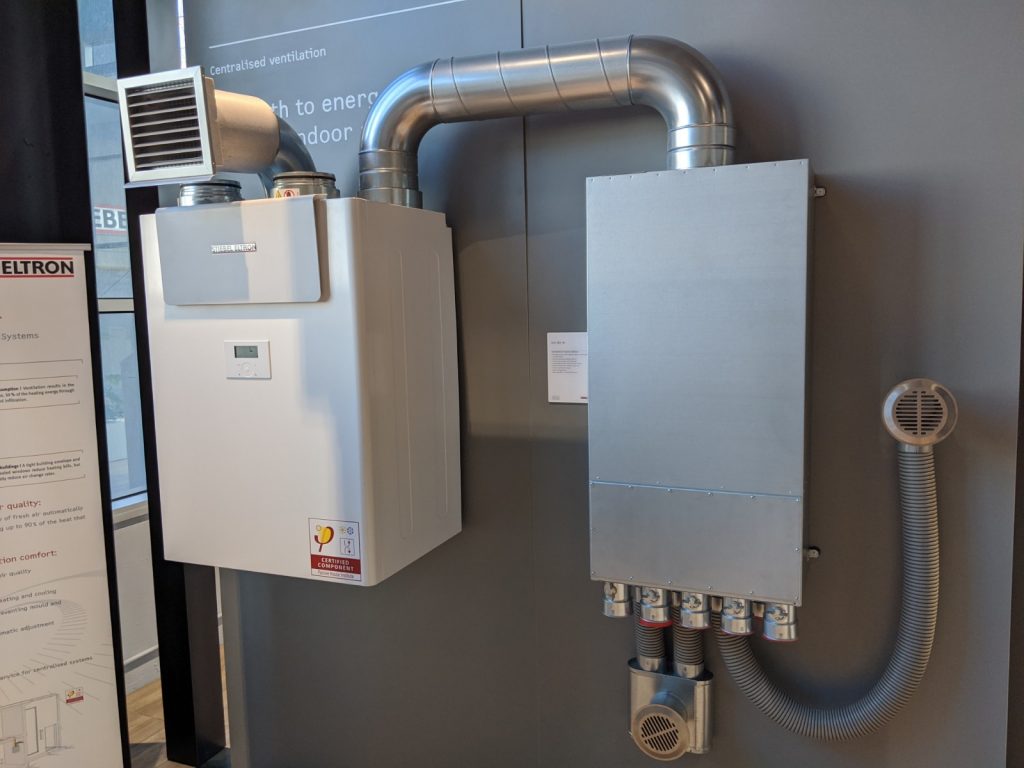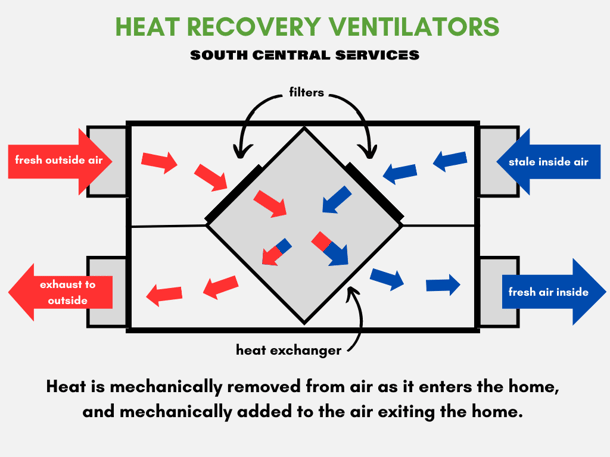Exploring the Conveniences of Heat Recovery Ventilation for Power Performance in Homes
Heat Recovery Ventilation (HRV) systems supply homeowners a practical technique to enhancing power efficiency. By recovering heat from outgoing air, these systems can significantly minimize heating & cooling expenses. Furthermore, they supply a constant supply of fresh air, enhancing interior air top quality and comfort levels. As home owners take into consideration sustainable choices, comprehending the subtleties of HRV systems ends up being increasingly vital. What variables should one examine before making such a financial investment?
Understanding Heat Recovery Ventilation Solutions

Exactly How HRV Enhances Indoor Air Quality

Power Cost Savings: The Monetary Advantages of HRV
Optimizing power performance, heat recovery ventilation (HRV) systems use substantial monetary advantages for property owners. By recuperating and reusing warmth from exhaust air, HRVs considerably minimize home heating and air conditioning expenses. This technology can bring about energy savings of as much as 30%, depending on climate and usage patterns. Home owners typically discover decreased energy bills soon after installation, making HRVs a financially sensible investment over time. Furthermore, many regions offer motivations or rebates for energy-efficient upgrades, further enhancing the monetary allure. As power prices proceed to increase, the cost-effectiveness of HRVs ends up being increasingly clear. In general, the unification of HRV systems like this not just advertises energy performance but also contributes to long-lasting economic savings for homes.
The Ecological Impact of Heat Recovery Ventilation
A substantial environmental benefit of heat recovery ventilation (HRV) systems depends on their capacity to lower total energy consumption. By recovering heat from exhaust air and moving it to inbound fresh air, HRV systems decrease the demand for energy-intensive heating and cooling down approaches. This reduction in energy demand adds to lower greenhouse gas emissions, as much less nonrenewable fuel source is required to keep comfy indoor temperatures. Furthermore, HRV systems improve interior air Discover More quality by successfully trading stagnant air with fresh exterior air, lowering reliance on mechanical air conditioning systems that can harm the environment. Overall, the execution of HRV systems supports lasting living techniques and lines up with global initiatives to battle environment change by promoting power effectiveness in residential settings.
Selecting the Right HRV System for Your Home
How can homeowners guarantee they select the right heat recovery ventilation (HRV) system for their demands? They ought to analyze their home's size and layout, as these factors influence air movement requirements. Next, reviewing the system's effectiveness ratings is essential, as higher ratings suggest much better efficiency and energy cost savings. Homeowners must additionally think about installation and maintenance costs, comparing different brands and designs for worth. In addition, it is essential to evaluate noise degrees, as some systems operate more quietly than others. Consulting with HVAC professionals can provide customized suggestions based on certain home conditions. Finally, taking a look at customer evaluations and warranties can help in making an educated choice, making certain that the picked HRV system efficiently enhances interior air high quality and energy efficiency.
Frequently Asked Concerns

Just how Commonly Should I Clean or Preserve My HRV System?
The regularity of cleaning or preserving a warm healing ventilation (HRV) system typically depends upon usage and ecological variables. Typically, it is a good idea to execute upkeep every six months to ensure peak performance why not try here and air quality.

Can HRV Equipments Help In Reducing Humidity Levels Inside?
HRV systems can efficiently reduce interior humidity degrees by trading stagnant, damp air with fresh, drier air from outside. HRV Heat Recovery Ventilation. This procedure helps keep a well balanced interior setting, enhancing convenience and protecting against moisture-related issues
What Is the Life expectancy of a Common HRV System?
The lifespan of a normal heat recovery ventilation (HRV) system varies, typically lasting between 10 to 15 years. Routine upkeep can prolong its performance and operational life, ensuring peak performance throughout its usage period.
Exist Any Type Of Noise Problems With HRV Equipments?
Noise worry about HRV systems can arise, particularly from follower operation. However, several modern systems are designed to minimize audio levels, guaranteeing they operate silently while preserving effectiveness, which deals with possible disruptions in living environments.
Can I Install an HRV System Myself, or Do I Required a Specialist?
The private contemplated whether to set up the heat recovery ventilation (HRV) system personally or employ a professional. Generally, while do it yourself installation is feasible, knowledge guarantees correct performance and conformity with neighborhood building ordinance, enhancing system efficiency.